Projects/Fairs
Art Dubai | Bawwaba Section – Booth B3 | Dubai, United Arab Emirates
Embroidery is an expression that crosses many cultures since ancient times. The domesticated vegetable fiber, after being a weft that shelters, was used to refer to the transcendental, to power, to heaven. The embroidery work of José Luis Martinat seeks to dialogue with this ancestral tradition. The myth of progress in Western society and how it has been introduced to the rest of the world is proposed as the starting point of his research. Since 2016, Martinat creates embroidered pieces that question political, economic and religious beliefs about a capitalist prophecy of a better future.
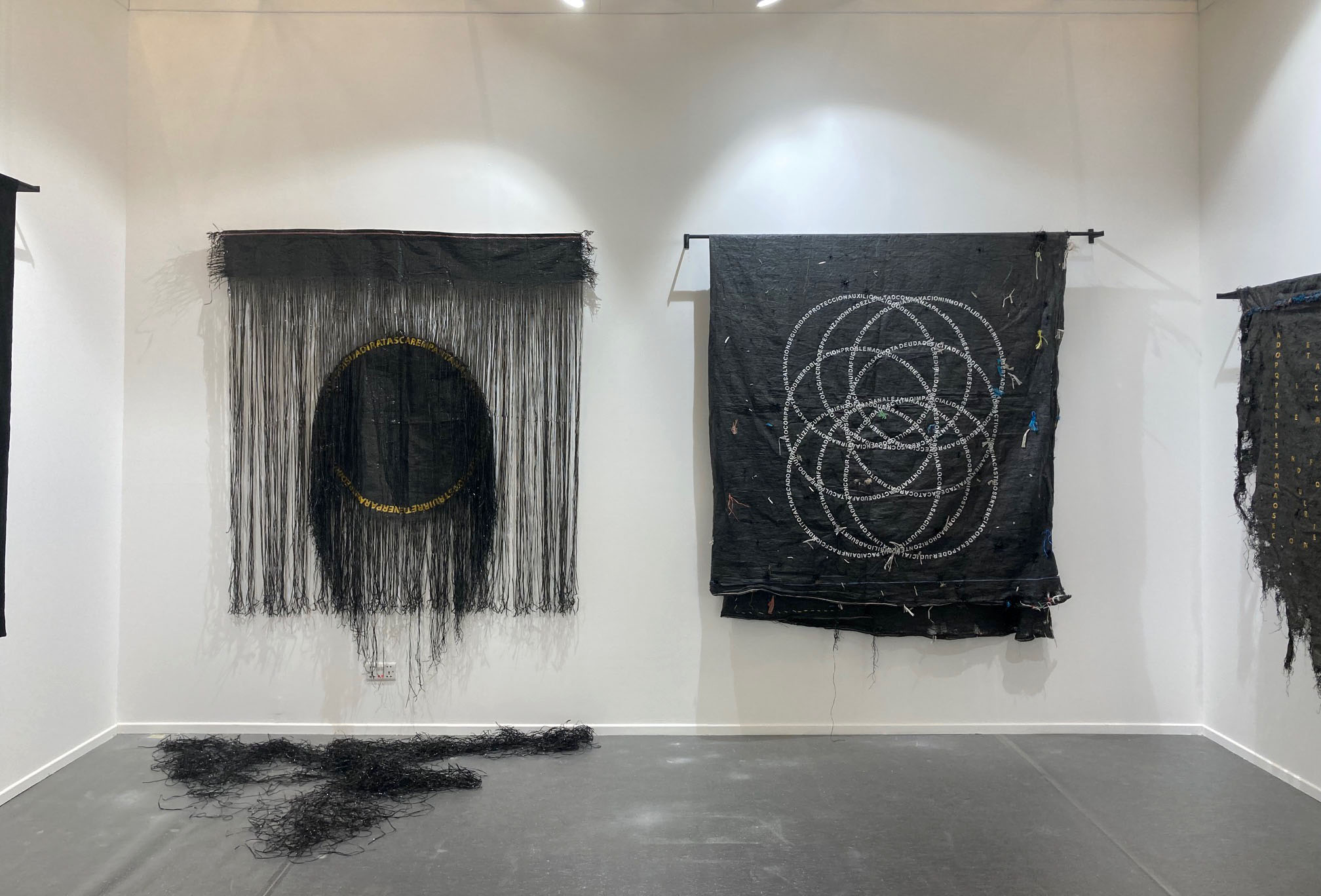
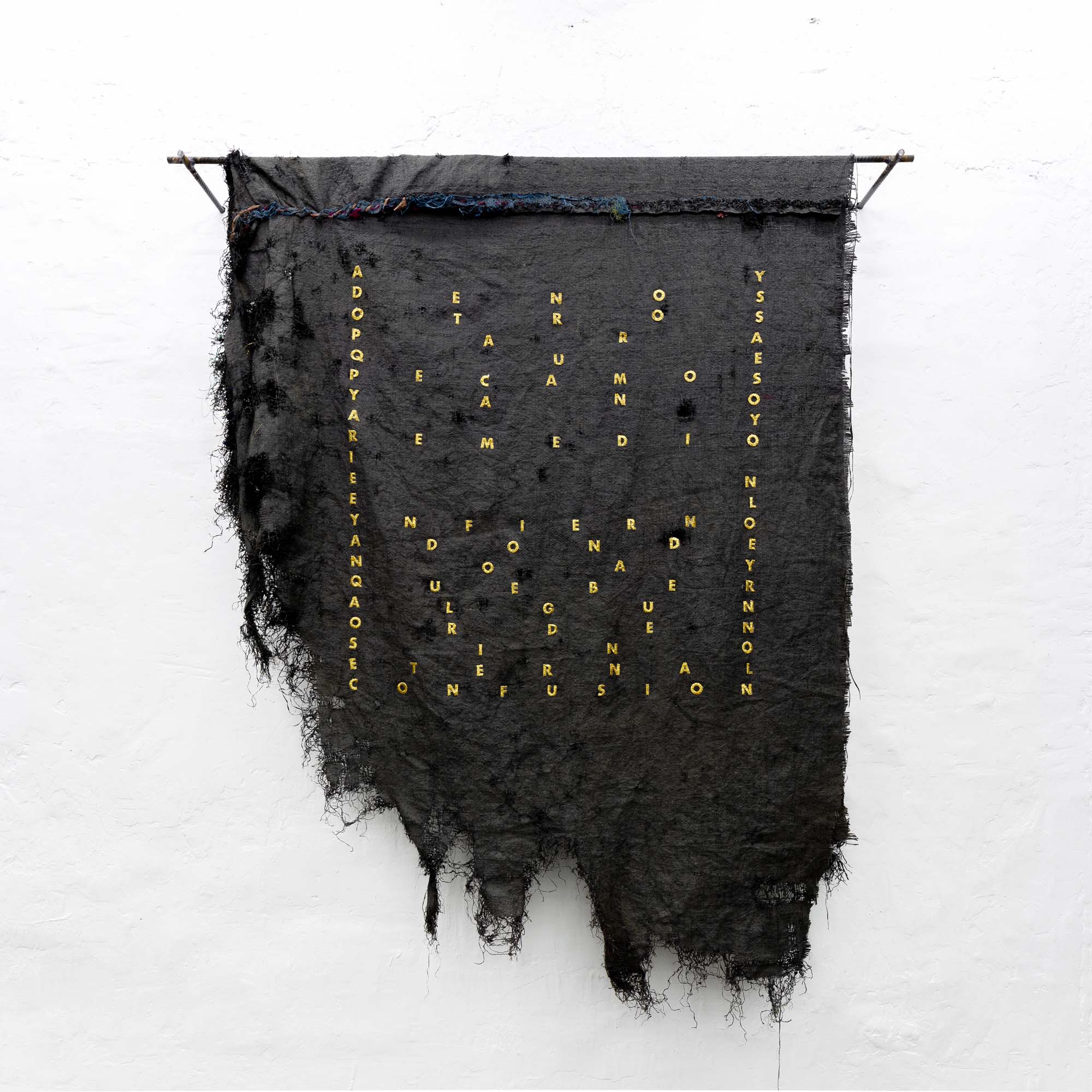
In recent years, she has collected everything from political speeches and slogans to religious propaganda, which she uses as the basis for her works. The embroideries are made by artisans who have appropriated and adapted traditional techniques brought with the introduction of the baroque to America.
The Vencidos project has been carried out between Lima and Santiago. In Lima he worked with the Grados family, who have been in charge of making Peruvian presidential bands since the 1950s. Although this type of work is characterized by the use of fine fabrics, Martinat uses old worn-out plastics.
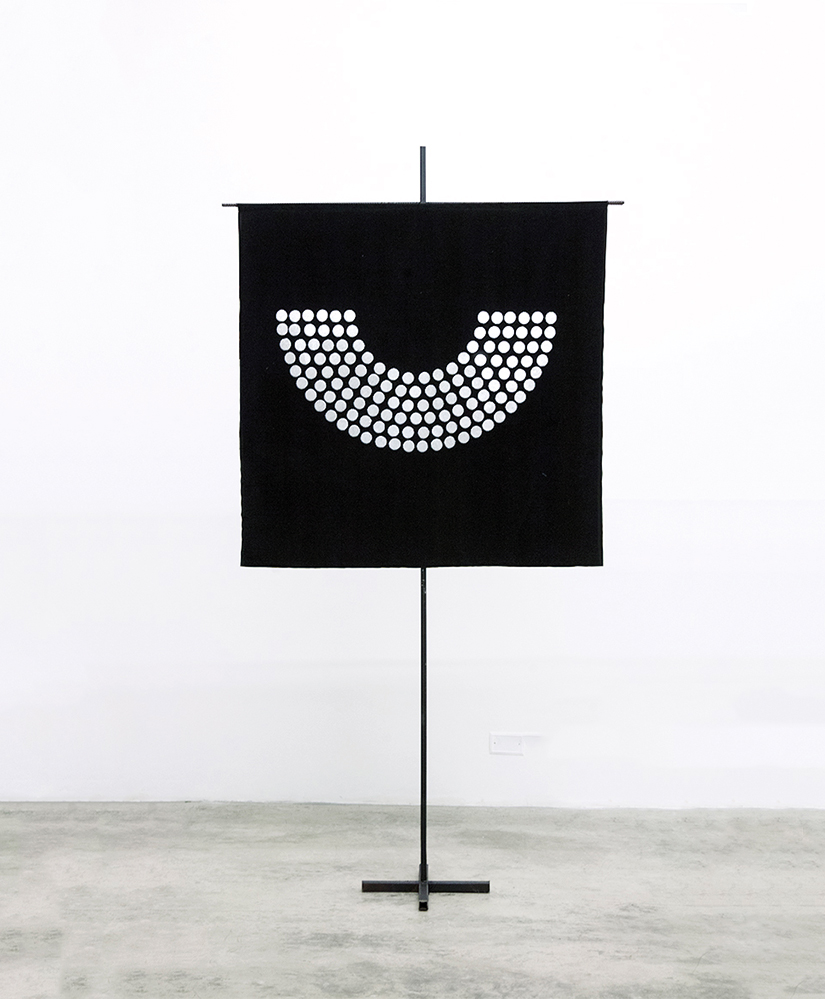
Industrial fabrics that have been reused in different ways in mining, agriculture and construction. Recycled ad nauseam in different ways until they reached Martinat's hands, in Lima's food markets, where they were finally used as "blankets" to cover the stalls during the night. The artist gave them one last life.
During his stay in Santiago, Martinat has removed some of the cobblestones from the Sagrada Mercancía floor itself, which were then hand-painted with motifs of ribbons taken from Cusquenian baroque paintings. As in those times, the production has been in charge of an anonymous painter.
These scrolls contain messages that were used inside the paintings to evangelize the population. In this case, the words selected by Martinat, in addition to a religious perspective, can be read politically in the contemporary context. The ribbons have been painted on the buried side of the cobblestone, bringing to the surface a sign of colonial development introduced to our continent through the act of inverting it and putting it in contact with the current environment.
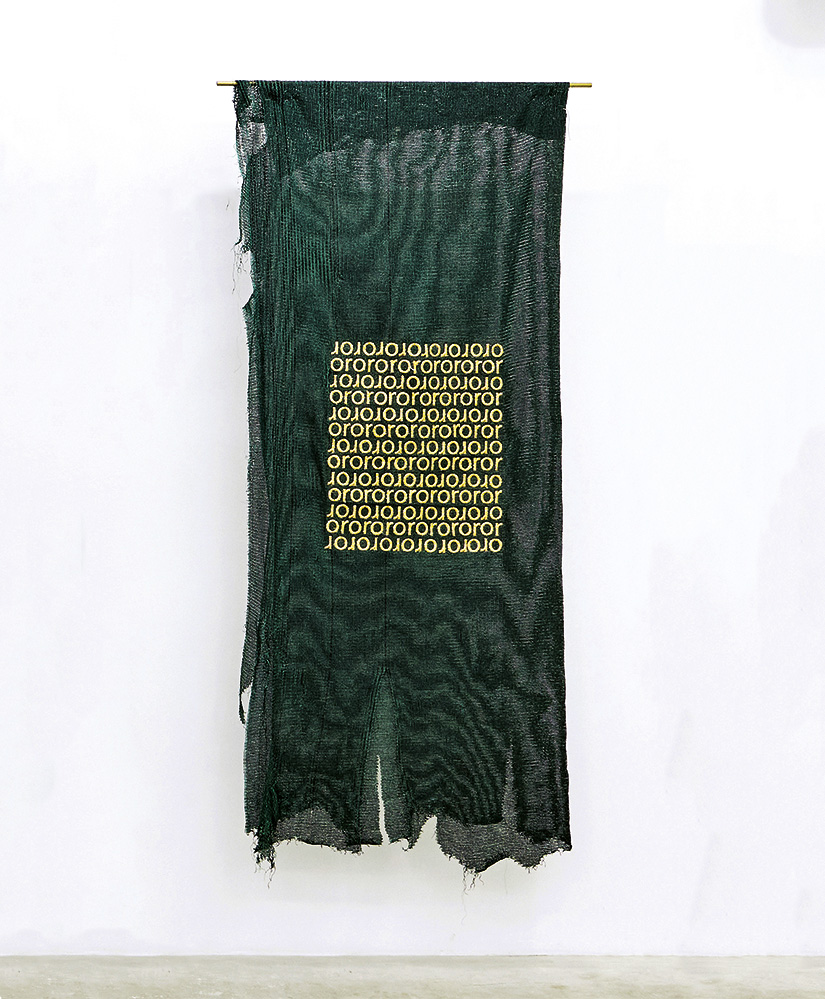
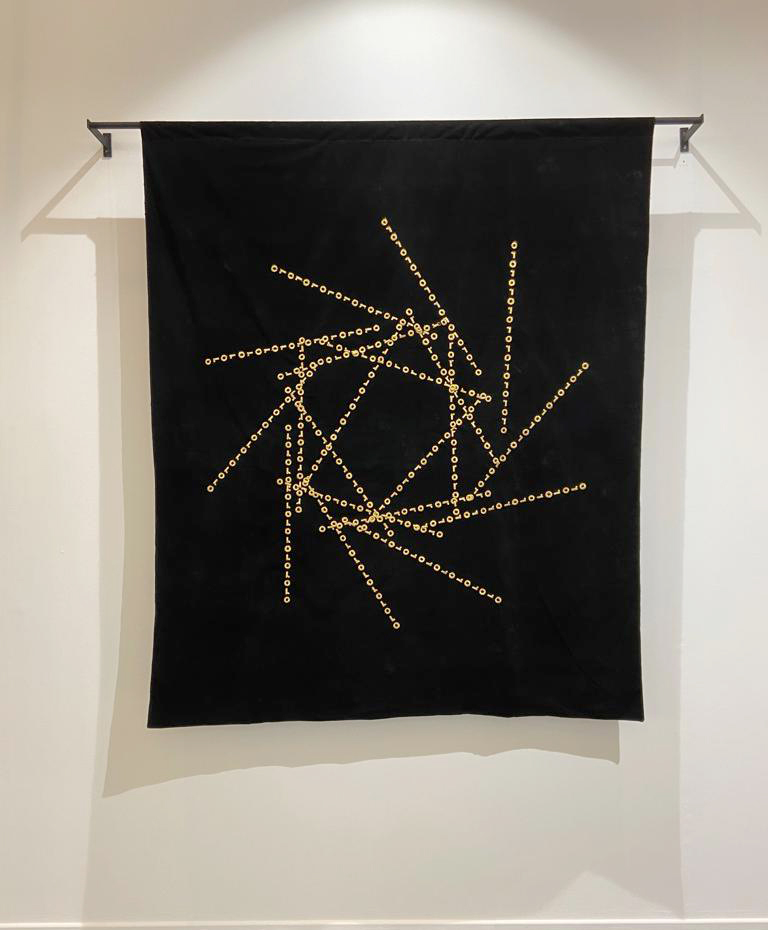
The fine embroidery on these well-worn canvases and the painting on the removed cobblestones generates an intense dialectic and, by working with winks with elements typical of Catholic worship, proposes to think about how similar are the strategies of evangelization and the contemporary imposition of the idea of market, economy, production and corruption.
Curatorial text by Bili Sanchez Montenegro.
Artist:
José Luis Martinat